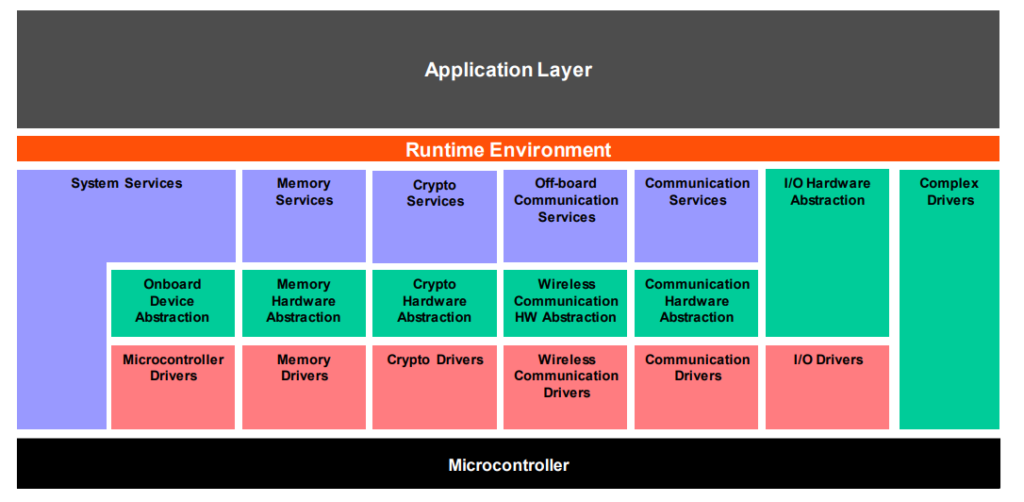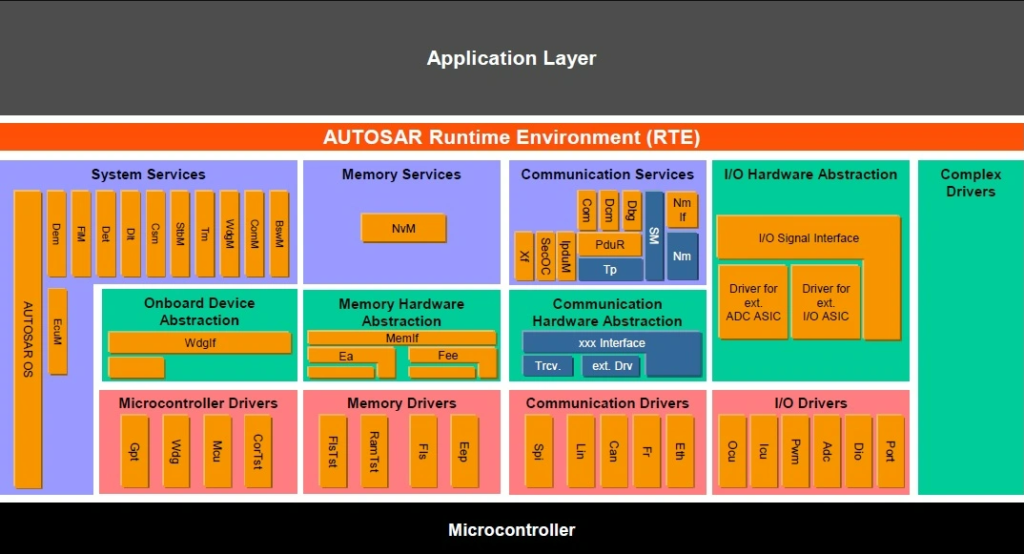Understanding Real-Time in Embedded Systems
Real-time systems are integral to various applications, from aerospace and automotive systems to consumer electronics and industrial automation. Understanding real-time in embedded systems involves grasping how these systems manage and process data within strict time constraints. This blog will delve into the fundamentals of real-time embedded systems, their characteristics, types, design considerations, and practical applications.
Understanding the COM Stack in AUTOSAR: A Comprehensive Guide
In the realm of automotive software development, AUTOSAR (Automotive Open System Architecture) has become a cornerstone framework for creating standardized, modular, and scalable software solutions. At the heart of AUTOSAR lies the Communication Stack, commonly referred to as the COM stack, which plays a vital role in enabling communication between different software components within an automotive system. In this blog, we will delve into the intricacies of the COM stack, exploring its architecture, components, functionalities, and significance in modern automotive software engineering.
Understanding SPI Protocol: Operation and Applications
In the realm of embedded systems and electronics, communication protocols play a pivotal role in facilitating data exchange between various components. One such protocol, Serial Peripheral Interface (SPI), stands out for its simplicity, versatility, and efficiency. In this comprehensive guide, we delve into the inner workings of SPI protocol, exploring its operation, applications, and key features.
Understanding Synchronous and Asynchronous Communication in Embedded Systems
In the world of embedded systems, where efficiency and reliability are paramount, communication between different components plays a crucial role. Whether it's coordinating tasks between microcontrollers or exchanging data between sensors and actuators, the method of communication can greatly impact the performance and functionality of the system. In this blog post, we'll delve into two primary modes of communication: synchronous and asynchronous, exploring their differences, advantages, and use cases.
Top 10 C Coding Interview Questions and Answer (2024)
By yoginFebruary 4, 2024Automotive, C language Practice Programs, Embedded System, Job Interview Preparations, Programming language
C is a general-purpose programming language that was created in the early 1970s by Dennis Ritchie at Bell Labs. It has since become one of the most widely used programming languages and has influenced many other languages.
C Coding Interview Questions are generally asked in interview.
Fibonacci series: Write a C language program to generate and print the fibonacci series
The Fibonacci series is a sequence of numbers in which each number is the sum of the two preceding ones, usually starting with 0 and 1. In mathematical terms, the Fibonacci sequence is defined by the recurrence relation:
Merry Christmas: Writing a C Program to Wish Merry Christmas
As the festive season approaches, spreading joy and cheer becomes a delightful tradition. One creative way to celebrate is by crafting a simple C language program that wishes "Merry Christmas" through a festive pattern. In this blog post, we'll guide you through the process of creating a Christmas tree using C.
Write a C program to swap two bits in a bytes.
In the realm of programming, especially in languages like C, bit manipulation is a powerful tool that allows developers to perform various operations at the lowest level of data representation. One interesting task within this domain is swapping two bits within a byte. In this blog, we'll delve into a simple yet insightful C program that accomplishes this bit-swapping magic.
Write a C program to find whether a given number is prime or not
given number is prime or not?
A prime number is a natural number greater than 1 that cannot be formed by multiplying two smaller natural numbers. In simpler terms, a prime number is only divisible by 1 and itself. For example, 2, 3, 5, 7, and 11 are prime numbers, while 4, 6, 8, and 9 are not, as they can be divided evenly by numbers other than 1 and themselves
Factorial Numbers: Write a C program to find Factorial Numbers of a given numbers.
By yoginDecember 11, 2023Job Interview Preparations, C language Practice Programs, Embedded System, Programming language
Factorial numbers are a mathematical concept that plays a crucial role in various branches of mathematics and computer science. The factorial of a non-negative integer is the product of all positive integers less than or equal to that number. It is denoted by the symbol
Understanding AUTOSAR Architecture: A Guide to Automotive Software Integration
AUTOSAR was initiated in 2003 as a collaborative effort between major automotive manufacturers and suppliers. The goal was to establish a common framework for automotive software development, aiming to address the growing complexity of vehicle electronics.
Over the years, AUTOSAR has evolved to meet the increasing demands of the automotive industry. Today, it has become a de facto standard, shaping the way vehicle software is developed and integrated.
How Does I2C Communication Works?
Inter-Integrated Circuit (I2C) is a serial communication protocol used to connect microcontrollers and other digital circuits to peripheral devices such as sensors, memory, and other components. It was developed by Philips (now NXP Semiconductors) in the early 1980s and has since become a widely adopted standard in the electronics industry.
Watchdog Timer in Embedded System.
Watchdog Timer: The Secret to Reliable System Operation When it comes to designing embedded systems and other applications where uptime and reliability are critical, a watchdog timer can be a powerful tool. In this post, we’ll take a closer look at what watchdog timers are, how they work, and why they’re so important for reliable …




